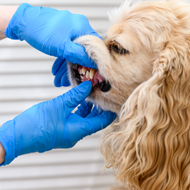Equine osteochondrosis study findings
Breeding conditions have been linked with a prevalence of osteochondrosis (OC) in foals, according to a recent study.
OC is caused by a defect in the epiphyseal endochondral ossification and is the most common developmental orthopaedic disease in horses. The disease can be affected by external factors.
Until now, there have been few OC studies conducted under field conditions, therefore, scientists from both Belgium and France collected data on housing and feeding management to determine their relationship with OC in young sport horses, under field conditions.
The study involved 223 young Belgian warmbloods aged between 12 to 36 months undergoing standard radiological examination to diagnose the presence of OC lesions.
A questionnaire was also submitted to to the horse owners in order to collect data about both the mares' and foals' feeding management and housing conditions during three periods; gestation, birth to weaning and weaning to one year.
The scientists concluded that the type of feeding of the mare during gestation and the type of housing of the foal until one year of age are significant in relation to the risk of developing permanent OC lesions.
The results state: "The most substantial finding of this study is the demonstration of a significant relationship between OC and maternal nutrition during pregnancy and between OC and the type of housing of the foal during its first year after birth.
"It appears that mares fed concentrates during their gestation are more likely to produce foals that subsequently develop OC compared to other mares."
The results also showed that keeping foals exclusively at pasture from birth to one year of age is a protective factor against OC.



 The WSAVA has invited veterinary professionals to a webinar on responsible antibiotic usage in dentistry.
The WSAVA has invited veterinary professionals to a webinar on responsible antibiotic usage in dentistry.